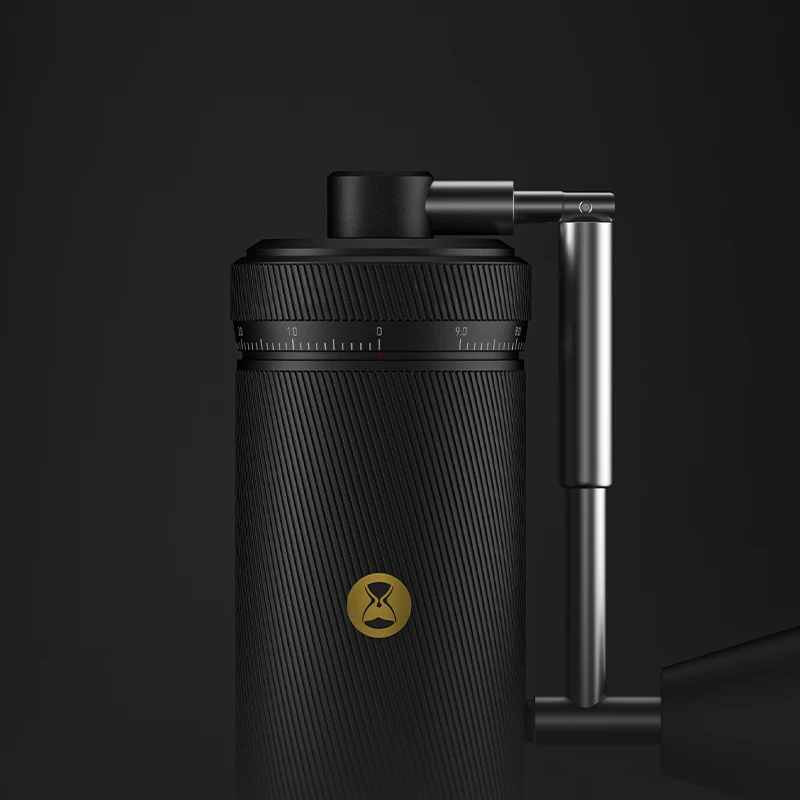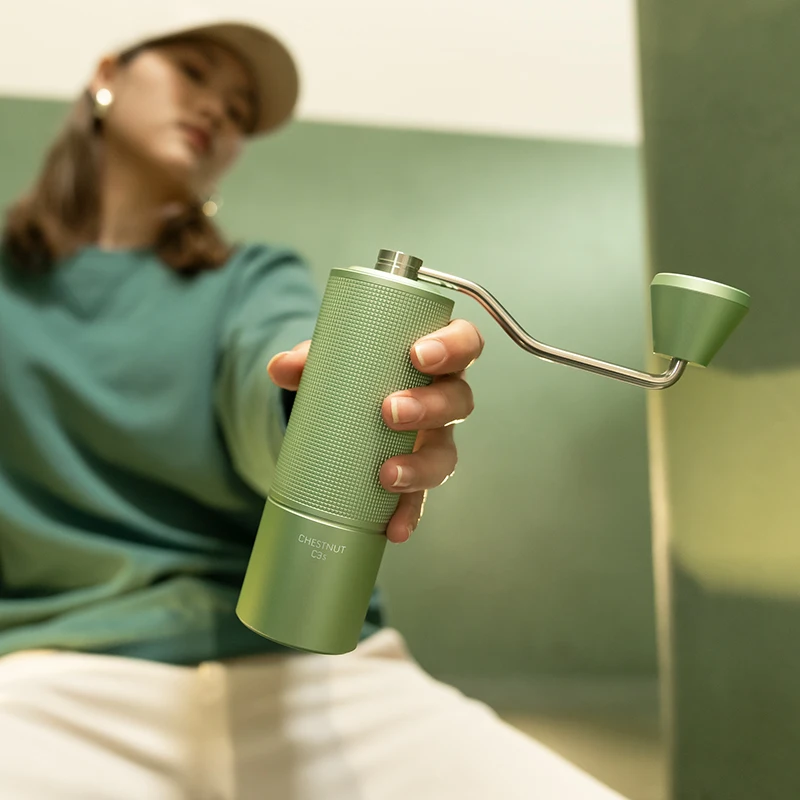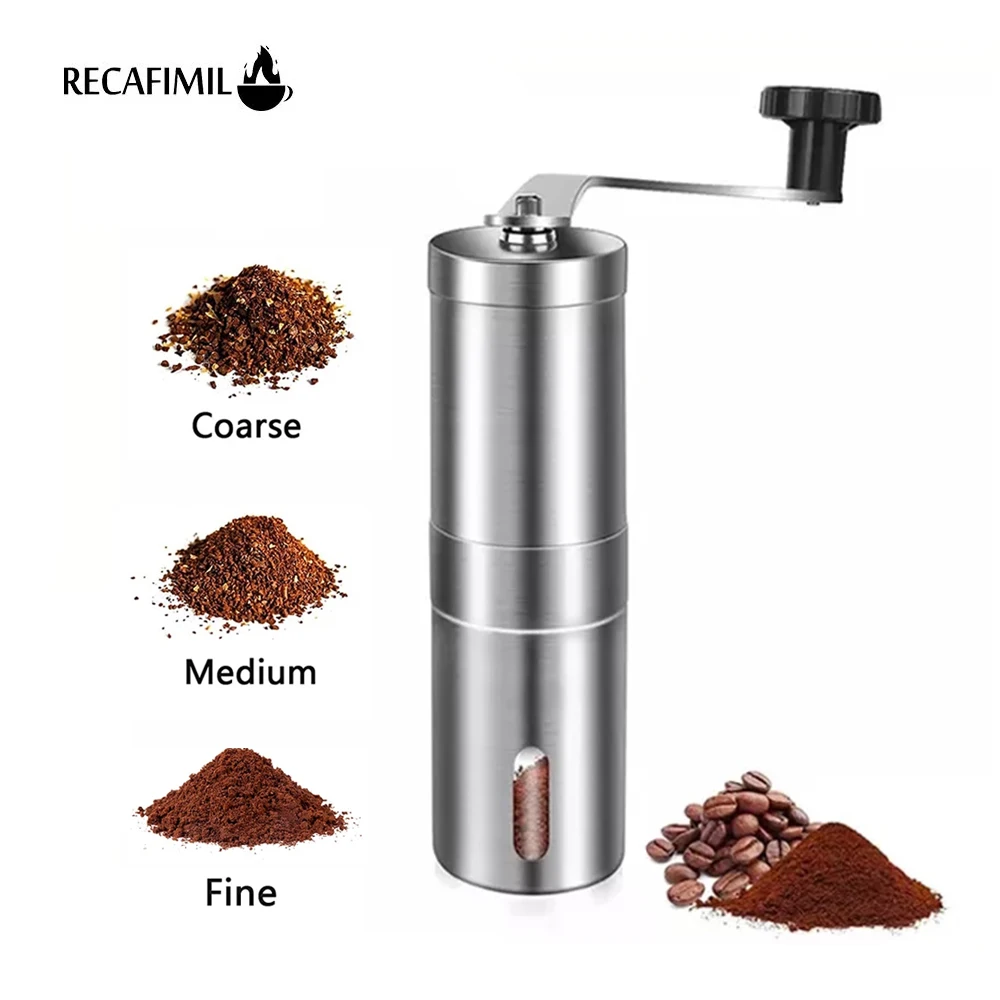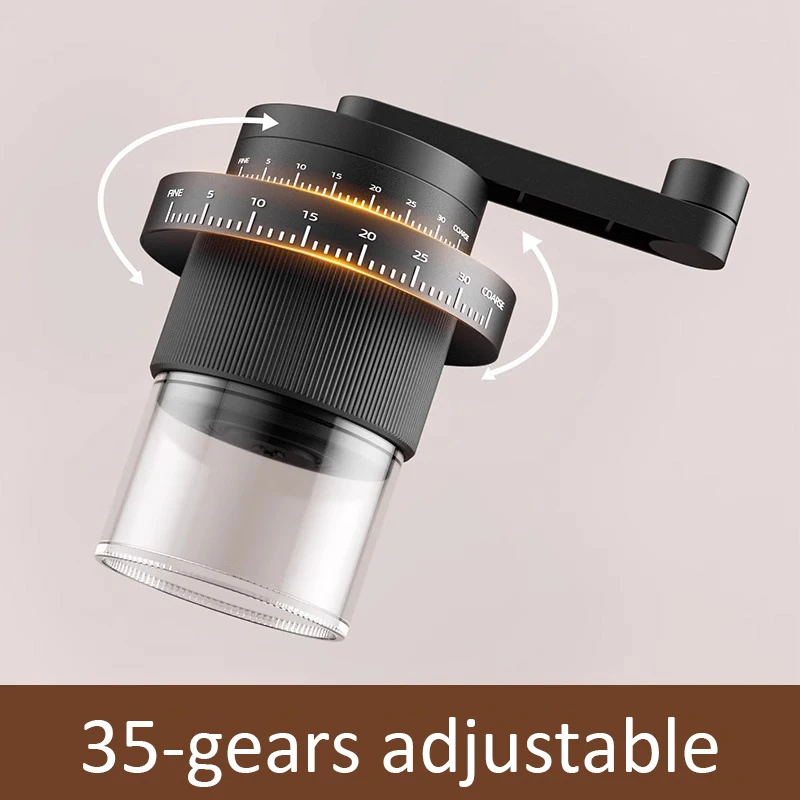Introduction: Why Clean Coffee Grinders Are Essential for Superior Coffee
Your coffee is only as good as the equipment you use to prepare it. While many coffee enthusiasts focus on bean origin and brewing methods, the cleanliness of your grinder plays a crucial but often overlooked role in your coffee’s flavor profile.
When coffee beans are ground, they release oils that contain much of the flavor compounds that make coffee so delicious. However, these oils don’t simply disappear after brewing. They cling to your grinder’s burrs and chambers, where they gradually oxidize and become rancid. This rancidity introduces unpleasant bitter notes and off-flavors that mask the subtle characteristics of fresh coffee.
Regular cleaning of your coffee grinder delivers several important benefits:
- Improved taste consistency – Removes old coffee residue that contaminates fresh grounds
- Maintained grind precision – Prevents buildup that affects particle size consistency
- Extended grinder lifespan – Reduces wear on mechanical components
- Prevention of clogs – Eliminates blockages that cause grinder malfunctions
- Elimination of potential mold growth – Removes moist coffee grounds that can harbor bacteria
Understanding the fundamentals of maintaining manual coffee grinders is essential for anyone serious about brewing excellent coffee. Even high-quality grinders require regular maintenance to perform optimally, as most coffee lovers eventually discover when they question do coffee grinders need maintenance after noticing declining coffee quality.
Understanding Coffee Grinder Maintenance Timing
Establishing a proper cleaning schedule for your coffee grinder depends largely on how frequently you use it. Following appropriate timing guidelines ensures your grinder operates at peak performance without unnecessary maintenance.
Recommended Cleaning Frequency
| Usage Level | Quick Clean | Deep Clean |
|---|---|---|
| Light (1-2 cups daily) | Weekly brush-out | Monthly thorough cleaning |
| Moderate (3-5 cups daily) | Daily brush-out | Bi-weekly thorough cleaning |
| Heavy (6+ cups daily) | After each use | Weekly thorough cleaning |
| Commercial | After each batch | Daily thorough cleaning |
Several factors may necessitate more frequent cleaning:
- Dark roasts contain significantly more oils that accumulate faster in your grinder
- Flavored coffees leave behind strong residual tastes that can contaminate future batches
- High humidity environments can cause grounds to stick more readily to grinder components
- Extended periods of non-use may allow mold development in residual grounds
Following appropriate manual coffee grinder cleaning frequency guidelines prevents flavor contamination while extending the lifespan of your equipment. The right balance ensures you’re not cleaning unnecessarily but also not allowing harmful buildup to affect your coffee quality.
Essential Coffee Grinder Cleaning Tools: A Complete Overview
Before diving into specific cleaning methods, it’s important to understand the variety of tools available for maintaining your coffee grinder. Different grinder designs—whether conical burr, flat burr, or blade—may require slightly different approaches, though the fundamental tools remain similar.
Coffee grinder cleaning tools generally fall into these categories:
- Ground removal tools – For sweeping away loose coffee particles
- Residue elimination products – For dissolving and absorbing coffee oils
- Precision cleaning implements – For accessing hard-to-reach areas
- Maintenance accessories – For disassembly, reassembly, and general upkeep
Understanding specific manual burr coffee grinder cleaning techniques ensures you’re using the right tools for your specific equipment. Quality matters too—premium manual coffee burr grinders often feature designs that provide better access for cleaning, making maintenance significantly easier.
Let’s explore each category of cleaning tools in detail to help you assemble the perfect maintenance kit for your coffee grinder.
Specialized Grinder Cleaning Products: Tablets and Pellets
Among the most effective products for maintaining coffee grinders are specialized cleaning tablets and pellets. These products are specifically formulated to absorb coffee oils and break down residue that accumulates on burrs and in grinding chambers.
Cleaning tablets work by being ground through your coffee grinder like regular beans. As they pass through, their absorbent and slightly abrasive qualities remove coffee oils and residue without the need for disassembly, making them particularly convenient.
Key benefits of using specialized cleaning products include:
- Removal of oils that brushes alone cannot reach
- Food-safe formulations designed specifically for coffee equipment
- Convenient cleaning without complete disassembly
- Neutral properties that don’t leave residual tastes
- Effective at reaching internal components that may be difficult to access
Leading cleaning tablet options include:
- Urnex Grindz – Pioneer in the category with superior oil absorption
- Puly Grinder Cleaner – Popular in commercial settings for thorough cleaning
- Full Circle – Environmentally-friendly option with organic ingredients
For optimal results, run cleaning tablets through your grinder monthly for home use or weekly for commercial applications. After using tablets, grind a small amount of coffee beans (about 10g) and discard to remove any remaining cleaning product residue.
While slightly more expensive than homemade solutions, specialized cleaning products provide superior results and safety, making them worth the investment for protecting your grinder. For those concerned about chemicals, non-toxic cleaners for burr grinders offer peace of mind, especially with ceramic burr coffee grinders that require particular care to avoid damage.
The Perfect Grinder Brushes: Types and Techniques
A quality brush is perhaps the most essential tool for daily coffee grinder maintenance. The right brush allows you to remove loose grounds and some surface oils without the need for disassembly or specialized products.
Different brush types serve various cleaning functions:
- Long-handled grinder brushes – Designed to reach deep into grind chambers without getting your hands dirty
- Angled brushes – Feature bristles arranged at specific angles to clean between burr teeth effectively
- Precision detail brushes – Smaller brushes for cleaning tight spaces and retention points
When selecting a grinder brush, consider bristle stiffness carefully. Bristles should be firm enough to dislodge compacted coffee grounds but not so stiff they scratch or damage precision burr surfaces. Natural bristles tend to be gentler on metal surfaces, while synthetic bristles often provide more rigidity for stubborn residue.
For effective brushing technique:
- Tap the grinder gently to dislodge loose grounds
- Use short, firm strokes to sweep out remaining grounds
- Pay special attention to the areas beneath burrs where grounds accumulate
- Use the brush tip to carefully clean between burr teeth
- Brush the grinder exit chute where grounds often stick
Implementing a quick brushing routine after each use prevents buildup and significantly reduces the need for deep cleaning sessions. For those interested in optimal maintenance, exploring best manual grinder cleaning brushes can help identify the most effective options for your specific grinder model.
Precision Cleaning Tools: Air Blowers and Mini Vacuums

For reaching particles in the tiniest crevices of your grinder, air blowers and small vacuum tools provide precision cleaning that brushes simply cannot match.
Air Blower Options
Air blowers force compressed air into tight spaces, effectively dislodging stubborn coffee particles. Consider these options:
- Reusable photography blowers – Environmentally friendly with sufficient force for most home grinders
- Compressed air cans – Provide stronger pressure but contain chemicals and create waste
- Electric air dusters – Powerful options that eliminate the need for disposable cans
When using air blowers, maintain a safe distance (about 2-3 inches) from delicate components to prevent damage from excessive air pressure. For grinders with electronic components, ensure the power is disconnected before introducing air that could push particles into sensitive areas.
Mini Vacuum Solutions
Small vacuum tools provide excellent removal of coffee particles once they’ve been dislodged:
- USB-powered mini vacuums – Compact options with attachments designed for small spaces
- Computer/keyboard vacuum attachments – Work with standard vacuums but provide precision tips
- Handheld cordless vacuums – More powerful options for thorough cleaning
For best results, combine air blowing and vacuum techniques—use the blower to dislodge particles from tight spaces, then immediately vacuum them away before they settle elsewhere in the grinder.
These precision tools are particularly valuable for maintaining hand burr grinders that feature complex burr geometries with many small spaces where grounds can accumulate. The investment in quality precision cleaning tools pays dividends in extended grinder life and improved coffee flavor.
Essential Accessories: Cleaning Cloths and Detailing Tools
Beyond brushes and air tools, several smaller accessories complete a comprehensive grinder cleaning kit. These items address specific cleaning needs that larger tools cannot handle effectively.
Microfiber Cloths
High-quality microfiber cloths are essential for:
* Wiping down external surfaces without scratching
* Polishing metal components after cleaning
* Drying parts thoroughly before reassembly
* Removing finger oils from touch surfaces
Choose cloths with a tight weave (at least 300 GSM) and wash them separately from other laundry to prevent contamination with lint or chemicals that could affect coffee flavor.
Precision Detailing Tools
For intricate cleaning tasks, consider these specialized implements:
- Interdental brushes – Perfect for cleaning narrow chutes and channels
- Soft pipe cleaners – Flexible enough to navigate curved pathways in grinders
- Fine-tipped paintbrushes – Excellent for brushing out burr teeth
- Wooden toothpicks – Safe for dislodging compacted grounds without damaging metal
Disassembly Tools
Proper tools for disassembly ensure you won’t damage your grinder during maintenance:
- Precision screwdriver set – For removing small screws without stripping
- Fine-tipped tweezers – For manipulating small parts during cleaning
- Small parts tray – For organizing components during disassembly
These accessories are particularly valuable when maintaining precision manual grinders with complex internal mechanisms. While these tools might seem unnecessary, they make the cleaning process significantly more efficient and help prevent damage to your grinder.
Step-by-Step Burr Grinder Cleaning Process Using Essential Tools
Now that we’ve covered the necessary tools, let’s walk through a comprehensive cleaning process for burr coffee grinders. Following these steps will ensure your grinder remains in optimal condition.
Safety and Preparation
- Unplug electric grinders or prepare a clean, well-lit workspace for manual models
- Place a towel on your work surface to catch loose grounds and prevent lost parts
- Have all cleaning tools within reach before beginning
- Consider taking photos of your grinder before disassembly to aid in reassembly
Basic Cleaning Process
Initial brush cleaning
* Remove the hopper and brush out visible loose grounds
* Use a brush to clean the feeding mechanism and exposed burrs
* Tap the grinder gently to dislodge additional particlesDisassembly
* Refer to manufacturer instructions for proper disassembly steps
* Remove the top burr carrier (typically twists out or is secured with screws)
* Place small parts in a designated container to prevent lossThorough burr cleaning
* Brush all surfaces of both burrs with a grinder brush
* Use detailing tools for spaces between burr teeth
* Apply compressed air to remove particles from crevices
* Wipe down accessible areas with a dry microfiber clothDeep cleaning with tablets (monthly)
* Reassemble the grinder temporarily
* Run manufacturer-recommended amount of cleaning tablets through the grinder
* Follow with a small amount of coffee beans to remove residual cleaner
* Disassemble again for final cleaningReassembly and calibration
* Ensure all parts are completely dry before reassembly
* Follow reverse order of disassembly, referring to photos if needed
* Check alignment of burrs and calibrate grind settings if necessary
* Run a small amount of beans through and discard to ensure proper function
For particularly thorough maintenance, follow the essential steps to deep clean a hand coffee grinder guide, which provides additional detail on removing stubborn residue and oils.
Quality stainless steel manual coffee grinders are often designed with easier maintenance in mind, with fewer crevices where coffee can accumulate.
Simplified Cleaning Methods for Blade Grinders
While burr grinders are preferred by coffee enthusiasts for their consistency, many people use blade grinders. These require different cleaning approaches due to their simpler but less accessible design.
Safe Blade Grinder Cleaning
- Unplug the grinder – Safety is paramount when working with exposed blades
- Brush away loose grounds – Use a soft brush at a 45-degree angle to sweep around blades
- Wipe carefully – Use a slightly damp cloth to clean the grinding chamber, avoiding the motor base
- Clean hard-to-reach areas – Use a cotton swab slightly dampened with water for tight spaces
- Dry thoroughly – Ensure all moisture is removed before next use to prevent rusting
Alternative Cleaning Methods
Blade grinders can benefit from these specialized approaches:
- Bread method – Grinding soft bread pieces helps absorb oils (use 1-2 small cubes)
- Uncooked instant rice – A small amount can help clean blades, though this carries some risk of damaging the motor (avoid regular rice as it’s too hard)
- Wipe down with diluted vinegar – Use sparingly on a cloth (not poured in) for sanitizing
After any cleaning method, wipe out all residue with a clean dry cloth and allow the grinder to air out with the lid off for 30 minutes before using.
For more detailed instructions on maintaining different grinder types, refer to general cleaning manual coffee grinders techniques that apply to both blade and burr models.
Professional-Grade Cleaning Tools for Commercial Grinders

Commercial coffee environments face unique cleaning challenges due to higher volume and continuous use. Professional-grade tools help maintain these workhorses efficiently.
Specialized Commercial Cleaning Tools
- Industrial-strength cleaning tablets – Formulated for high-volume grinders with more powerful cleaning agents
- Extra-stiff bristle brushes – Designed to tackle compacted coffee in high-usage machines
- Commercial cleaning kits – Comprehensive sets with specialized tools for specific grinder models
- Burr pullers and alignment tools – For safe removal and perfect realignment of large commercial burrs
Efficiency Considerations
Commercial environments need to balance thorough cleaning with minimizing downtime:
- Schedule deep cleaning during slow periods or after closing
- Keep multiple hoppers to swap quickly during cleaning
- Use faster-dissolving cleaning products designed for commercial use
- Maintain a dedicated cleaning station with all necessary tools
For businesses, cleaning product usage should be calculated based on volume. A general rule is to use cleaning tablets after every 35-50 pounds of coffee, adjusting based on roast level (darker roasts require more frequent cleaning).
Whether using commercial equipment or high-end home models like a manual burr mill, establishing a consistent cleaning schedule is essential for maintaining grind quality and equipment longevity.
Avoiding Common Coffee Grinder Cleaning Mistakes
Even with the right tools, improper cleaning techniques can damage your coffee grinder. Here are critical mistakes to avoid:
Damaging Practices to Avoid
- Using rice for cleaning – Despite being a popular myth, rice is significantly harder than coffee beans and can dull burrs or damage motors
- Washing electrical components – Never submerge grinder bases or expose motors to water
- Using excessive force – Forcing components apart can bend or break precision parts
- Applying cooking oils – These go rancid quickly and contaminate coffee flavor
- Using abrasive cleaners – These can scratch precision surfaces and affect grind quality
- Reassembling while damp – This can cause rust or encourage mold growth
Safety Considerations
- Always disconnect electric grinders before cleaning
- Wear protective glasses when using compressed air
- Handle burrs carefully to avoid both cuts to fingers and damage to the cutting edges
- Keep small components organized to prevent loss or incorrect reassembly
If you’ve made a cleaning mistake, don’t panic. Most issues can be addressed by thoroughly drying all components and performing a proper cleaning with appropriate tools. For grinders with moving parts that require maintenance beyond cleaning, proper lubricating hand coffee grinder burrs techniques can restore smooth operation without affecting coffee flavor.
Fine Adjustment Hand Grinder, Precision Manual Grinder, Travel Coffee Grinder
Price range: $185.11 through $494.63 Select options This product has multiple variants. The options may be chosen on the product pageHand Burr Grinder, Hand Crank Coffee Grinder, Manual Espresso Grinder, Portable Coffee Grinder
Price range: $262.72 through $300.22 Select options This product has multiple variants. The options may be chosen on the product pageManual Burr Mill, Manual Coffee Grinder Stainless Steel, Manual Coffee Mill Grinder, Mechanical Coffee Grinder
Price range: $127.26 through $130.32 Select options This product has multiple variants. The options may be chosen on the product pageHand Burr Grinder, Manual Coffee Grinder Stainless Steel, Precision Manual Grinder
Price range: $183.64 through $187.52 Select options This product has multiple variants. The options may be chosen on the product page
DIY Cleaning Solutions: When and How to Use Them Safely
While professional cleaning products are ideal, there are times when you might need to use household alternatives. Here’s how to do it safely:
Safe DIY Alternatives
| Commercial Product | DIY Alternative | Effectiveness | Best For |
|---|---|---|---|
| Cleaning tablets | Instant rice (small amount) | Moderate | Emergency use only |
| Grinder brush | Clean makeup brush | Good | Daily maintenance |
| Compressed air | Bicycle pump with narrow attachment | Fair | Loose particle removal |
| Microfiber cloth | 100% cotton cloth | Good | External surfaces |
Important Limitations
DIY solutions come with significant restrictions:
- Avoid water-based solutions in any grinder with non-removable electrical components
- Never use soap directly in the grinding chamber
- Avoid abrasive materials like regular rice or salt that can damage burrs
- Don’t use alcohol or solvents on plastic components as they may cause cracking
For removable, washable parts like hoppers, mild dish soap and thorough drying is acceptable. However, for burrs and internal mechanisms, stick to dry cleaning methods whenever possible.
When considering the long-term value of your equipment, professional cleaning products are a small investment compared to replacement costs. Understanding how long manual coffee grinders last helps put the minimal cost of proper cleaning supplies into perspective.
Building Your Complete Coffee Grinder Cleaning Kit

Assembling a comprehensive cleaning kit ensures you’ll have the right tools for every maintenance situation. Here’s what to include:
Essential Cleaning Kit Components
Must-Have Tools:
* Grinder-specific brush with stiff bristles
* Grinder cleaning tablets/pellets
* Microfiber cloths (2-3)
* Small parts container
* Appropriate screwdrivers for your grinder model
Helpful Additions:
* Reusable air blower
* Detail brush set
* Precision tweezers
* Soft pipe cleaners
* Small vacuum attachment
Professional-Grade Options:
* Electric air duster
* Specialized burr removal tools
* Ultrasonic cleaner (for removable metal parts)
* LED inspection light
Organizing Your Cleaning Station
Create a dedicated space for grinder maintenance by:
* Storing all tools in a single container or drawer
* Keeping a small maintenance journal to track cleaning dates
* Positioning your cleaning area near your coffee setup but away from water
* Using a dedicated mat or towel as a work surface
A basic cleaning kit can be assembled for $30-50, while a comprehensive professional kit might cost $75-120. The investment pays for itself through improved coffee quality and extended grinder lifespan.
For those with multiple grinders or particularly valuable equipment like all-metal hand grinders, a more comprehensive kit ensures you’re prepared for any maintenance scenario. Learning techniques for maximizing lifespan of manual coffee grinders provides additional value from your cleaning investments.
How Proper Grinder Maintenance Improves Your Daily Coffee Experience
The effort you put into maintaining your coffee grinder translates directly into tangible improvements in your daily brewing experience. Let’s explore the concrete benefits of regular cleaning:
Flavor Transformation
Properly cleaned grinders produce remarkably different results compared to neglected equipment:
- Enhanced clarity – Clean burrs allow the subtle fruit notes and acidity in light roasts to shine through
- Improved sweetness – Without rancid oil contamination, the natural sweetness of the beans becomes more prominent
- Consistent extraction – Uniform particle size from clean burrs leads to balanced extraction and reduced bitterness
- True flavor expression – Each new coffee can be experienced as intended, without flavors from previous beans
Equipment Performance
Beyond taste, clean grinders simply work better:
- Smoother operation – Motors and mechanisms encounter less resistance when free of buildup
- Consistent dosing – Grinders deliver more accurate amounts when chambers are clear of old grounds
- Reduced static – Clean grinders produce less static cling, resulting in less mess
- Reliable adjustment – Clean burrs respond more predictably to grind setting changes
Regular maintenance doesn’t just improve your coffee—it’s a financial decision too. A quality manual coffee grinder for espresso properly maintained can last many years longer than a neglected one, saving hundreds of dollars in replacement costs.
By investing just a few minutes after each use and performing monthly deep cleaning, you ensure that every cup meets your high standards. After all, exceptional coffee requires exceptional care at every step of the process—from bean selection to brewing equipment maintenance.
At Savor Suite, we believe that the ritual of coffee preparation includes proper care for your tools. When you maintain your grinder with the same attention you give to selecting beans and perfecting your brew method, the results speak for themselves in the cup.







